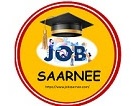Design a Learning System in Machine Learning
Included
- Choosing Training
Experience - Choosing Training
Function - Choosing the
Representation for Target Function - Choosing Function
Approximation Algorithm - Final Design
Step 1: Choosing Training Experience
Choosing Training
Experience plays an important role in success and failure learning of learner
or machine.
First factor for choosing
Training Experience is how to provide experience to learner. We can able
to provide experience to the learn in a form of direct Feed Back or indirect
feedback. In the Direct Feed Back learner directly Learn from examples like
different chess board state and moves. In the case Indirect feedback, learner
learn by experiencing it. In this learner provided with move sequences and
final outcomes of various games played further learner play the game and assign
credit or blame to every move in the sequence like credit of win and blame of
loss. every sequence of move. Assigning credit for wining and loss to every
move is again a challenging task because output further depend on sequence of
each and every move like initial highly credited move can leads to failure due
to further move. So, we can conclude that direct experience is much easier than
indirect feedback.
Second important factor
for choosing Training experience is the degree to which the learner controls
the sequence of training examples i.e., full dependent,
partially dependent and completely independent
In the case of fully
dependent learner is fully dependent on teacher in selecting the board state
and corresponding action.
Partially dependent case
is that, where learner partially dependent on teacher in selecting the board
state and corresponding action, he will ask to the teacher only when there is
any confusion.
Completely independent
mean learner is not dependent on teacher, he explores all the boards state and
their corresponding move by their own.
Third important attribute
is how much training experience satisfies the performance measure P on which
final performance of system is going to be measure.
For example, suppose performance
measure P for learner learning Cricket is number of match win by the learner on
the world tournament.
The training experience
provided to the learner to playing cricket against itself is not satisfy the
performance measure P mean we should provide an experience to the learner in
which learner play cricket against itself, at school level, interschool level,
inter state level. We can conclude that there is need to choose the training
experience that, should cover all the aspect needed to satisfy performance
measure.
Step2: Choosing Training Function
Target function basically
talk about what type of knowledge is going to be learned and how it will be
used to measure the performance.
Let’s consider an example
In Chess game the learner has to learn about how choose best move out of all
possible legal moves for any particular board situation.
Let Select Move be
the target function and the notation are
Select Move: BS→ LM
where Select Move function
accepts any board from the set of legal board states BS as input and generate
some move from the set of legal moves LM as output.
Select Move
is a choice for the target function in chess game example, but this function
seems to be very difficult to learn indirect training experience. So, there is
need of some modification.
An alternative target function
is Evaluation function which assign real value to legal moves according to
board state.
Let the target
function T and the notation
T:
BS → RV
the set BS. target function T is Intended to assign higher scores to better
board states. If the system learns such a target function T, then it can use it
to select the best move from any current board position.
in BS Set, as follows:
- If bs is a final state of chess board that is won, then T(bs) = 100
- If bs is a final state of chess board that is lost, then T(bs) = -100
- If bs is a final state of chess board that is drawn, then T(bs) = 0
- If bs is a not a final state of chess board in the game, then T(bs)
= T(bs’ ),
Where bs’ is the best final board state that can be achieved starting
from bS and playing optimally until the end of the game.
Step 3 Choosing the Representation for Target Function
As we know target
function talk about what to learn, there is need of representing target
function. Representation is used by learning algorithm to describe the function
T.
Step 4 Choosing Function Approximation Algorithm
